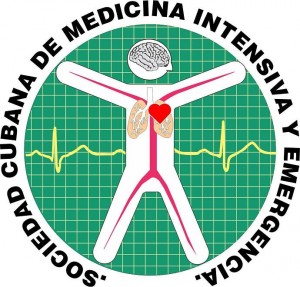Determinación de las variables asociadas a letalidad en pacientes sépticos mediante el uso de regresión logística
Palabras clave:
sepsis, letalidad, estudio exploratorio, regresión logísticResumen
Introducción: La sepsis es definida como un estado fisiopatológico, caracterizado por una desregulación de la respuesta inmune del huésped frente a un patógeno. La morbimortalidad asociada a esta enfermedad tiene un alto impacto en la salud de la población.
Objetivo: Identificar las variables con mayor impacto estadístico en la letalidad de los pacientes sépticos.
Métodos: Se realizó un estudio de cohorte retrospectivo. Se consideraron todos los casos registrados en la Unidad de Pacientes Críticos, del Hospital Clínico Herminda Martin, con diagnóstico clínico de sepsis durante el año 2017. La muestra se compuso de 145 sujetos. En primera instancia se desarrolló un modelo estadístico inferencial para variables categóricas donde se utilizó Chi cuadrado de Pearson; y para variables continuas, ANOVA. Entre las variables empleadas para este análisis estuvieron el sexo, peso, edad, foco infeccioso, presencia de diabetes mellitus, ventilación mecánica, tabaquismo, enfermedades previas. Luego, se desarrolló un modelo de regresión logística que permitió diferenciar variables epidemiológicas asociadas a mayor letalidad de pacientes sépticos. A este modelo, para ampliar su poder predictivo, se agregaron exámenes de laboratorio del ingreso del paciente a la unidad de paciente crítico.
Resultados: La letalidad global de la cohorte fue de 52 sujetos; se correspondió con 35,9 % de la muestra. Respecto al índice de masa corporal (IMC), no hubo diferencias significativas entre los grupos estudiados. El modelo generado indicó que, con un 95 % de confianza, la probabilidad de fallecer aumenta entre 76,3 % y 78,3 % en sujetos del sexo masculino y con foco infeccioso primario intraabdominal o respiratorio, respectivamente. Dicha probabilidad se elevó a un 100 % con lactato de 80 mg/dL.
Conclusión: Las variables con mayor incidencia, asociadas a la letalidad, fueron el sexo masculino, tener un foco infeccioso intraabdominal o respiratorio, y poseer lactato elevado. Por ende, y teniendo en cuenta que este fue un estudio exploratorio, dichas variables pueden ser potencialmente útiles para el desarrollo de un score.
Descargas
Citas
1. Singer M, Deutschman CS, Seymour CW, Shankar-Hari M, Annane D, Bauer M, et al. The Third International Consensus Definitions for Sepsis and Septic Shock (Sepsis-3). Jama. 2016;315(8):801-10. Doi: 10.1001/jama.2016.0287
2. Badke CM, Marsillio LE, Weese-Mayer DE, Sanchez-Pinto LN. Autonomic Nervous System Dysfunction in Pediatric Sepsis. Frontiers in pediatrics. 2018;6:280. Doi: 10.3389/fped.2018.00280
3. Gheorghita V, Barbu AE, Gheorghiu ML, Caruntu FA. Endocrine dysfunction in sepsis: a beneficial or deleterious host response? Germs. 2015;5(1):17-25. Doi: 10.11599/germs.2015.1067
4. Ingels C, Gunst J, Van den Berghe G. Endocrine and Metabolic Alterations in Sepsis and Implications for Treatment. Critical care clinics. 2018;34(1):81-96. Doi: 10.1016/j.ccc.2017.08.006
5. Simmons J, Pittet JF. The Coagulopathy of Acute Sepsis. Current opinion in anaesthesiology. 2015;28(2):227-36. Doi: 10.1097/ACO.0000000000000163
6. Ince C, Mayeux PR, Nguyen T, Gomez H, Kellum JA, Ospina-Tascon GA, et al. The Endothelium in Sepsis. Shock (Augusta, Ga). 2016;45(3):259-70. Doi: 10.1097/SHK.0000000000000473
7. Hatfield KM, Dantes RB, Baggs J, Sapiano MRP, Fiore AE, Jernigan JA, et al. Assessing Variability in Hospital-Level Mortality Among U.S. Medicare Beneficiaries with Hospitalizations for Severe Sepsis and Septic Shock. Critical care medicine. 2018;46(11):1753-60. Doi: 10.1097/CCM.0000000000003324.
8. Dougnac LA, Mercado FM, Cornejo RR, Cariaga VM, Hernández PG, Andresen HM, et al. Prevalencia de sepsis grave en las Unidades de Cuidado Intensivo: Primer estudio nacional multicéntrico. Revista médica de Chile. 2007;135:620-30. Doi: S0034-98872007000500010
9. Angus DC, Linde-Zwirble WT, Lidicker J, Clermont G, Carcillo J, Pinsky MR. Epidemiology of severe sepsis in the United States: analysis of incidence, outcome, and associated costs of care. Critical care medicine. 2001;29(7):1303-10. Doi: 10.1097/00003246-200107000-00002
10. Sacha GL, Bauer SR. Vasoactive Agent Use in Septic Shock: Beyond First-Line Recommendations. 2019;39(3):369-81. Doi: 10.1002/phar.2220
11. Hajj J, Blaine N. The "Centrality of Sepsis": A Review on Incidence, Mortality, and Cost of Care. Healthcare. 2018;6(3):90. Doi: 10.3390/healthcare6030090.
12. Letarte J, Longo CJ, Pelletier J, Nabonne B, Fisher HN. Patient characteristics and costs of severe sepsis and septic shock in Quebec. J Crit Care. 2002;17(1):39-49. Doi: 10.1053/jcrc.2002.33028
13. Alvear S, Canteros J, Jara J, Rodríguez P. Costos reales de tratamientos intensivos por paciente y día cama. Revista médica de Chile. 2013;141:202-8. Doi: S0034-98872013000200009
14. Badrinath K, Shekhar M, Sreelakshmi M, Srinivasan M, Thunga G, Nair S, et al. Comparison of Various Severity Assessment Scoring Systems in Patients with Sepsis in a Tertiary Care Teaching Hospital. Indian J Crit Care Med. 2018;22(12):842-5. Doi: 10.4103/ijccm.IJCCM_322_18
15. Julian-Jimenez A, Supino M, Lopez Tapia JD, Ulloa Gonzalez C, Vargas Tellez LE, Gonzalez Del Castillo J, et al. Sepsis in the emergency department: key points, controversies, and proposals for improvements in Latin America. Emergencias. 2019 Abr [citado: 19/01/2020];31(2):123-35. Disponible en: https://pubmed.ncbi.nlm.nih.gov/30963741/
16. Fiorentino M, Tohme FA, Wang S, Murugan R, Angus DC, Kellum JA. Long-term survival in patients with septic acute kidney injury is strongly influenced by renal recovery. 2018;13(6). Doi: 10.1371/journal.pone.0198269
17. Gunes Ozaydin M, Guneysel O, Saridogan F, Ozaydin V. Are scoring systems sufficient for predicting mortality due to sepsis in the emergency department? Turkish Journal of Emergency Medicine. 2017;17(1):25-8. Doi: 10.1016/j.tjem.2016.09.004
18. Pietropaoli AP, Glance LG, Oakes D, Fisher SG. Gender differences in mortality in patients with severe sepsis or septic shock. Gend Med. 2010;7(5):422-37. Doi: 10.1016/j.genm.2010.09.005
19. Luethi N, Bailey M, Higgins A, Howe B, Peake S, Delaney A, et al. Gender differences in mortality and quality of life after septic shock: A post-hoc analysis of the ARISE study. Journal of critical care. 2020;55:177-83. Doi: 10.1016/j.genm.2010.09.005
20. Trivedi V, Bavishi C, Jean R. Impact of obesity on sepsis mortality: A systematic review. J Crit Care. 2015;30(3):518-24. Doi: 10.1016/j.jcrc.2014.12.007
21. Nasa P, Juneja D, Singh O, Dang R, Arora V. Severe sepsis and its impact on outcome in elderly and very elderly patients admitted in intensive care unit. J Intensive Care Med. 2012;27(3):179-83. Doi: 10.1177/0885066610397116
22. Motzkus CA, Luckmann R. Does Infection Site Matter? A Systematic Review of Infection Site Mortality in Sepsis. Journal of intensive care medicine. 2017;32(8):473-9. Doi: 10.1177/0885066615627778.
23. Koh GC, Peacock SJ, van der Poll T, Wiersinga WJ. The impact of diabetes on the pathogenesis of sepsis. EJCMID. 2012 Apr;31(4):379-88. Doi: 10.1007/s10096-011-1337-4
24. Mohamed AKS, Mehta AA, James P. Predictors of mortality of severe sepsis among adult patients in the medical Intensive Care Unit. Lung India. 2017 Jul-Aug;34(4):330-5. Doi: 10.4103/lungindia.lungindia_54_16.
25. Alroumi F, Abdul Azim A, Kergo R, Lei Y, Dargin J. The impact of smoking on patient outcomes in severe sepsis and septic shock. Journal of intensive care. 2018;6:42. Doi: 10.1186/s40560-018-0312-x
26. Nick TG, Campbell KM. Logistic regression. Methods Mol Biol. 2007;404:273-301. Doi: 10.1007/978-1-59745-530-5_14
27. Wang Z, Ren J, Wang G, Liu Q, Guo K, Li J. Association Between Diabetes Mellitus and Outcomes of Patients with Sepsis: A Meta-Analysis. Med Sci Monit. 2017;23:3546-55. Doi: 10.12659/msm.903144
28. Yende S, van der Poll T. Diabetes and sepsis outcomes, it is not all bad news. Crit Care. 2009;13(1):117. Doi:10.1186/cc7707
29. Filho RR, Rocha LL, Corrêa TD, Pessoa CM, Colombo G, Assuncao MS. Blood Lactate Levels Cutoff and Mortality Prediction in Sepsis-Time for a Reappraisal? a Retrospective Cohort Study. Shock (Augusta, Ga). 2016;46(5):480-5. Doi: 10.1097/SHK.0000000000000667
30. Eckmann C, Bassetti M. Prognostic factors for mortality in (fecal) peritonitis: back to the roots! Intensive care medicine. 2014;40(2):269-71. Doi: 10.1007/s00134-013-3155-x.






